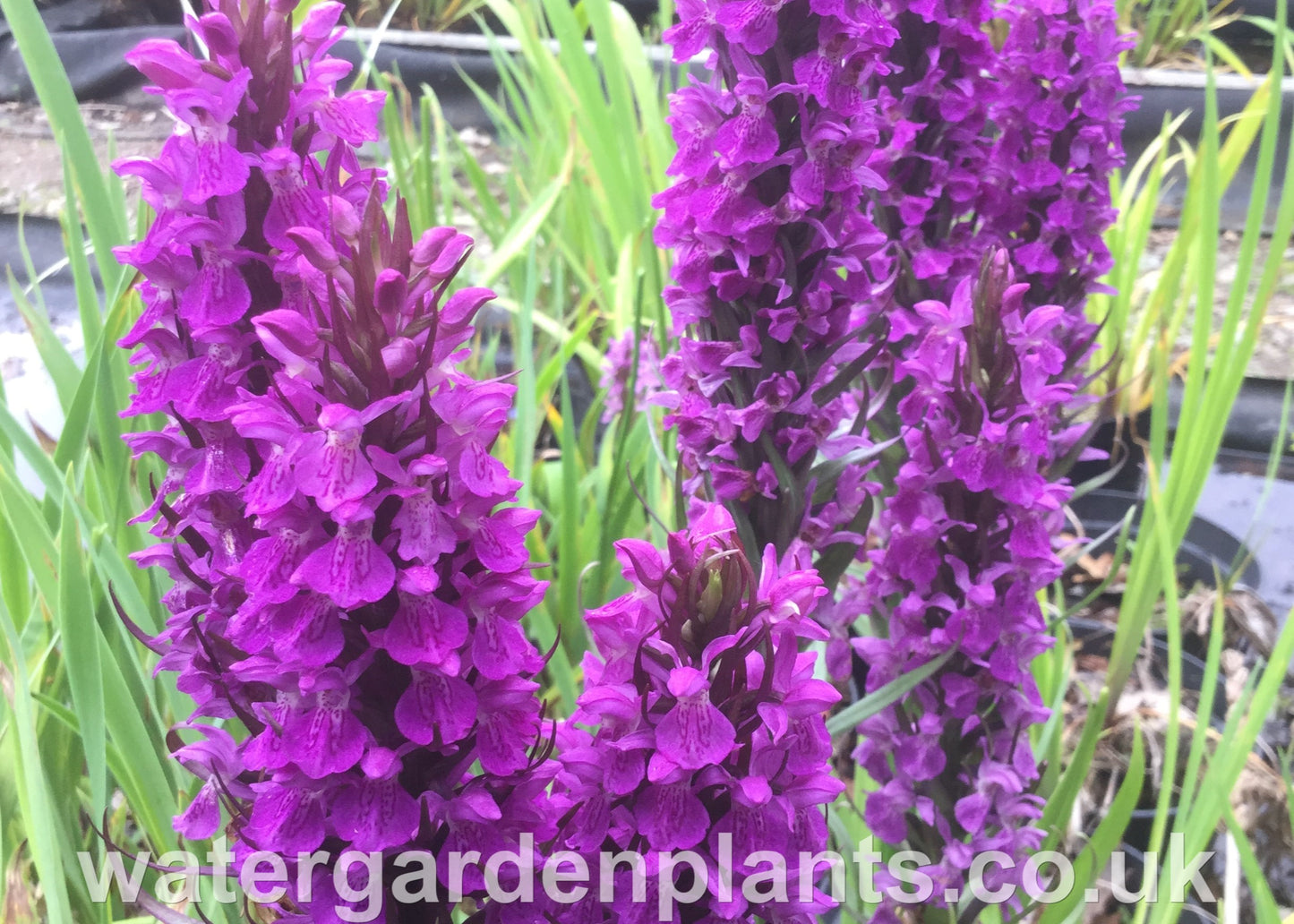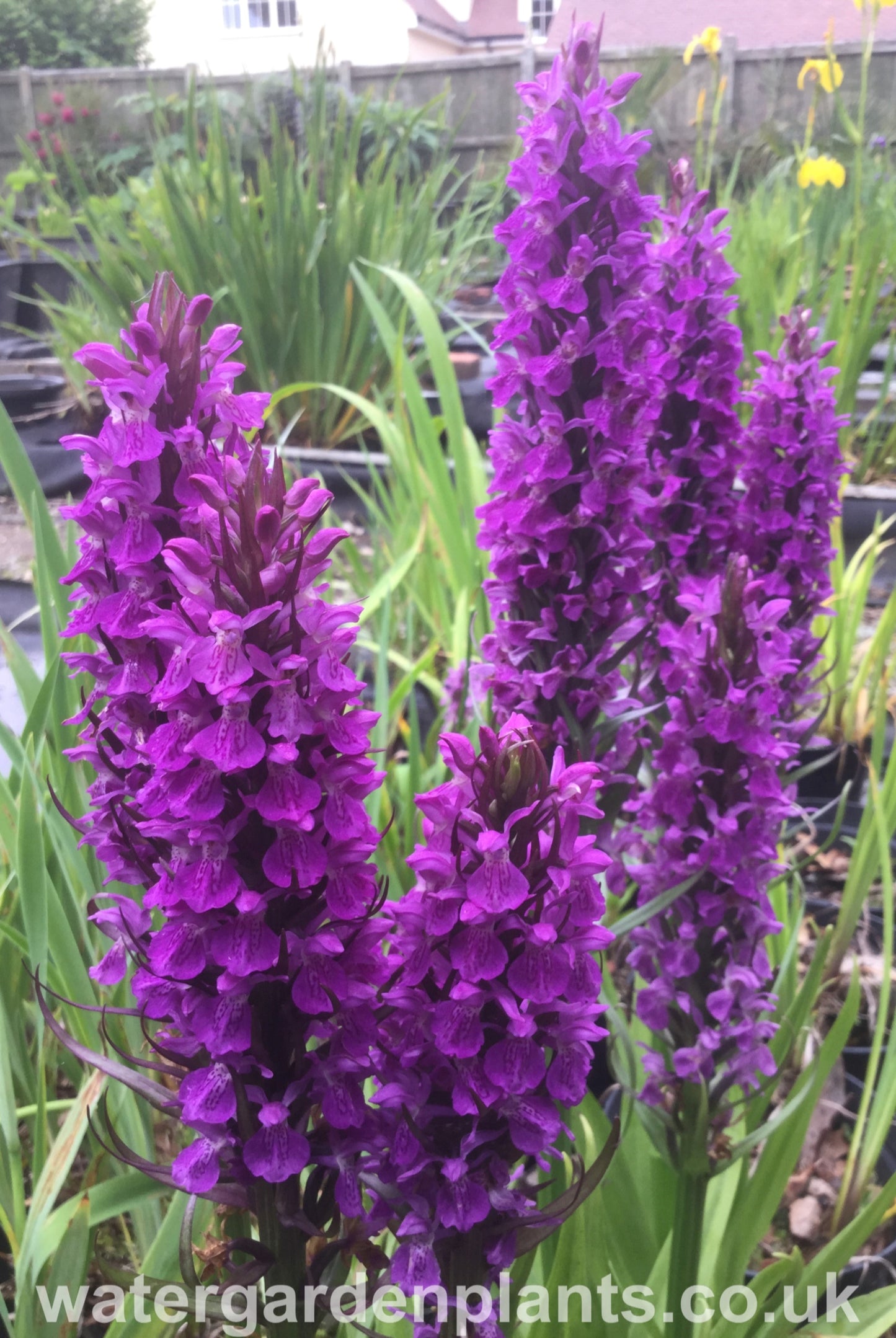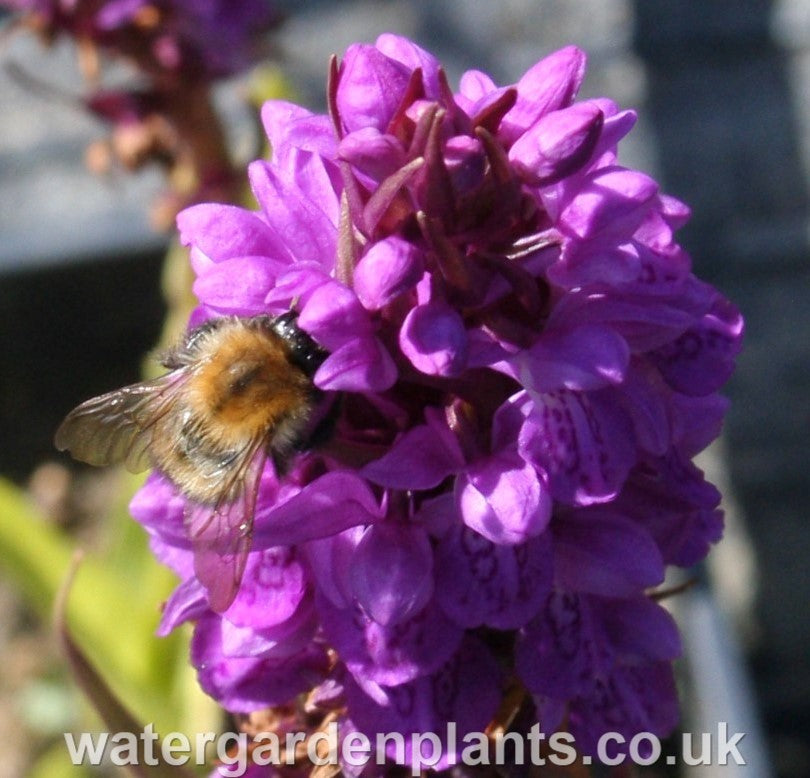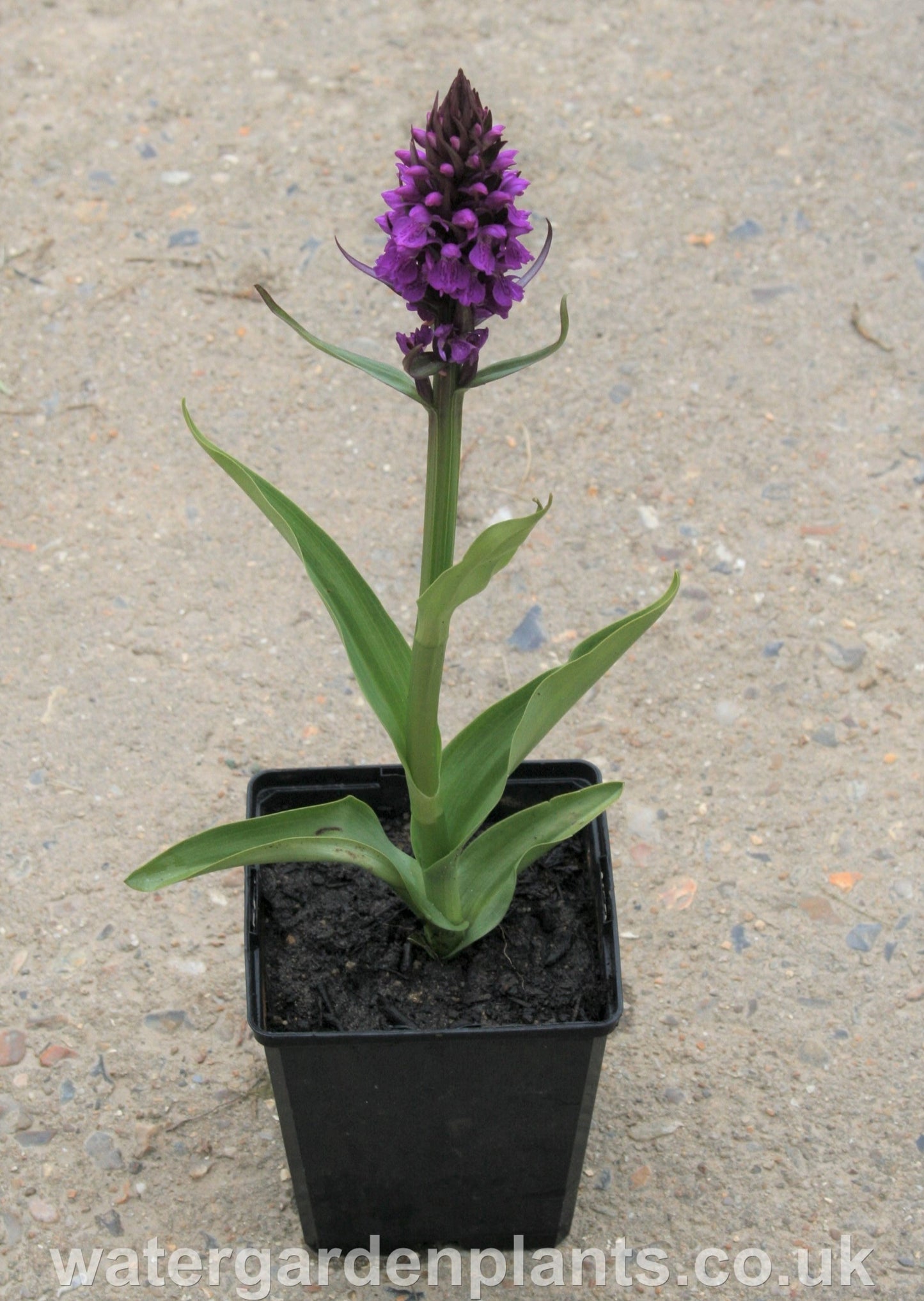





- Approximate height: 40cm (16 inches)
- Recommended water levels: plant in ordinary to wet soil but not under water
- Flowering time: June
- Flower colour: Purple
- Supplied in an 11cm (1 litre) pot
Found in marshes, fens, damp meadows and even roadside verges across the southern part of the UK, this is a vigorous orchid with striking-coloured blooms. At latitudes above Leeds, it is replaced by the Northern Marsh Orchid. It is one of our favourite Dactylorhiza, based on growing it here at the nursery for the last ten years. This is partly because it is a lovely colour - the flowers are magenta/purple with delicate markings - but mostly because we have found that it is very easy to grow, and spreads more readily than other marsh orchids. Spontaneous seedlings are a rarity with most Dactylorhiza, but with this variety they are routine - any open ground near the plant left undisturbed for two to three years is sure to have an odd seedling. Here at the nursery it will seed into random stock plants anywhere within about twenty feet. It's lovely to have a Dactylorhiza which will spread around the garden even a little like this - most of them simply form clumps which increase very slowly. The leaves on this variety are a plain green, without spots, and more upright than the Common Marsh Orchid.
You will receive one flowering-size plant. If planting it out into the garden, this is best carefully done in early spring when it starts to grow, or in autumn after it has flowered. This plant has unusual roots, from which its Latin name is derived. They are few and fleshy, rather than a fine web, and do not hold on to the soil. Therefore when you take the plant out of the pot some of the soil may fall out - this is normal.
Stock is always limited as we grow all plants ourselves naturally from seed, and flower them to check their identity before offering them for sale.
A note on origin and taxonomy: This Dactylorhiza was first found by a horticulturist friend in Cornwall around 25 years ago. It was growing as a weed in some potted plants that he purchased and he was told it was a local wild orchid. The Dactylorhiza orchids are a taxonomist's nightmare - there are a number of distinct species in Britain, primarily distinguished by flower colour (white through pink to purple/red) and leaf markings (completely plain through spotted on one side to spotted on both sides), but plants can vary considerably within species. For example, a certain species may be characterised by having spotted leaves and pink flowers. However, there may be a local variety of it which has spotted leaves but white flowers. Then there may be another local variety somewhere else which has unspotted leaves and pink flowers, yet these are all the same species. This difficulty is then increased by the fact that species hybridise with each other in the wild, producing intermediate forms. These intermediate forms can occasionally cross back into one or other of the parent species, cross into a third species, or even cross into another genus (e.g. Marsh Orchids crossing with Frog Orchids), creating a bewildering array of characteristics. The original collector thought this was a cross between D. fuchsii, the Common Marsh Orchid, and D. purpurella, the Northern Marsh Orchid, but when we submitted a specimen to an amateur orchid expert it was identified as the Southern Marsh Orchid. We believe this to be correct as it fits with its origin, appearance, fertility, and vigour.
If designing a planting scheme, we recommend approximately 2 Dactylorhiza praetermissa plants per square foot of ground, or 1 plant per linear foot of pond edge. Read more here on how to pot and care for your marsh plant.






